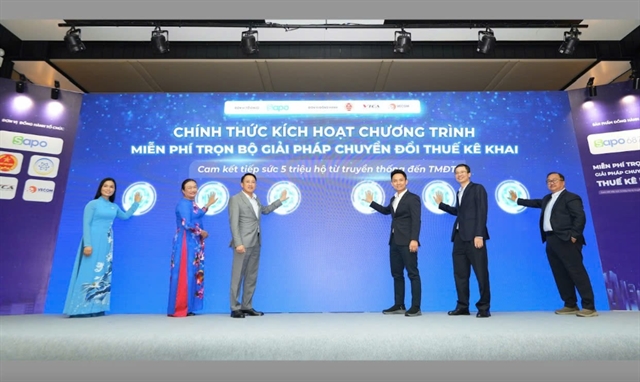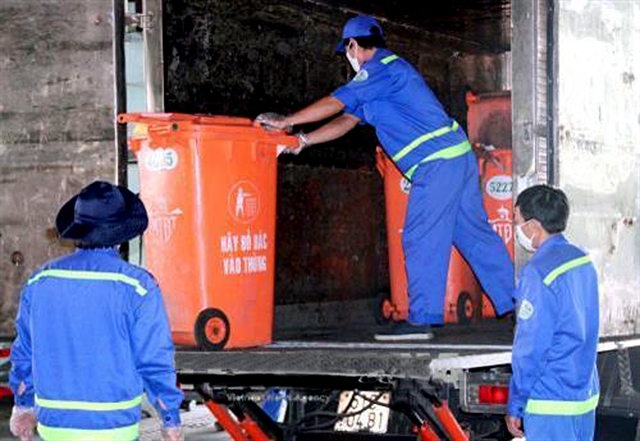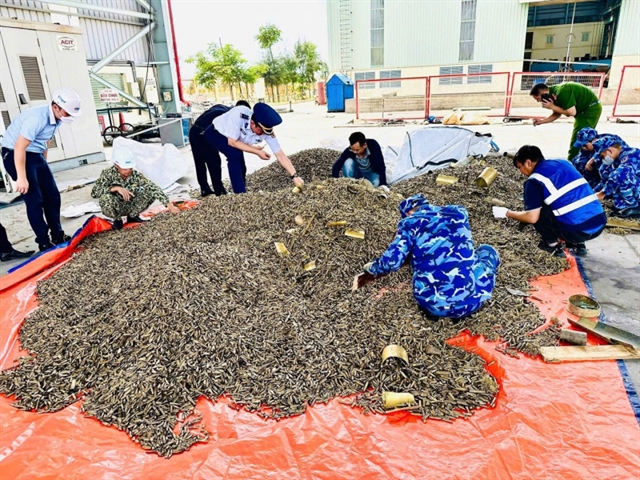 Environment
Environment

HCM City administration has planned to reduce the number of waste transfer stations in the city and strengthening measures to treat solid waste to protect the environment.

|
| HCM City aims to reduce the number of waste transfer stations from now to 2035 and apply advanced technologies at stations to protect the city's environment— VNA/VNS Photo Xuân Dự |
According to the plan, the city will only have 40 stations by 2025 and 36 stations by 2035.
From now to 2025, the city will stop the operation of nine existing stations that pollute the environment in District 7, 8, 9, 12, Thủ Đức District, Hóc Môn District and Cần Giờ District.
In addition, the city will expand and upgrade 11 stations in District 2, 4, 7, 9, 11, Gò Vấp District, Thủ Đức District, Bình Chánh District and Hóc Môn District.
From 2025 to 2035, the city will stop operating stations or change the using purpose for six stations.
During that time, the city will continue to operate 34 waste transfer stations that have expanded and upgraded and newly built two city-level of waste transfer stations in Củ Chi and Bình Chánh District
In addition these stations must ensure sufficient areas, safe environmental distances and national technical regulations for these solid waste transfer stations.
The municipal authorities will also equip garbage collection system, waste water and exhaust gas treatment system for the remaining stations, apply closed technology to ensure that they will not affect the surrounding environment, and connect with waste collection and transportation units.
For district-level stations, the station must have a total area arranged from 5,000 to 10,000 square meters.
These stations must also ensure the capacity to receive domestic solid waste generated from now to 2025 and capable of serving many other activities such as classification of solid waste at source, collection and classification of storage household waste, medical waste and other types of waste.
The reduction and moving these stations out of the inner city and the investment of modern waste treatment systems for these stations is the great determination of the city to protect the environment sustainably, and improve the quality of people's lives.
Trần Vĩnh Tuyến, deputy chairman of the city’s People Committee asked related agencies to continue to raise public awareness, urging people to not litter to the environment.
Agencies should focus on the application of information technology to make propaganda more effective, Tuyến adds.
In addition, the city authorities must strengthen the inspection, and handling violations in the district, and replicate initiatives and useful ideas to protect the environment, Tuyến said.
The city People's Committee has just issued the regulation on management of domestic solid waste in the city which will be effective from June 1.
According to regulations, individuals, households must sort solid waste at source into three groups, including easily biodegradable organic waste, waste capable of being reused and recycled and the group of remaining waste.
The People's Committee of the ward will be responsible for considering and resolving the feedbacks and recommendations of individuals, households on waste in the area.
After receiving complaints and feedbacks from people about unclassified waste, within 24 hours, individuals and organisations must conduct waste disposal or they will be fined by the city authority. — VNS




